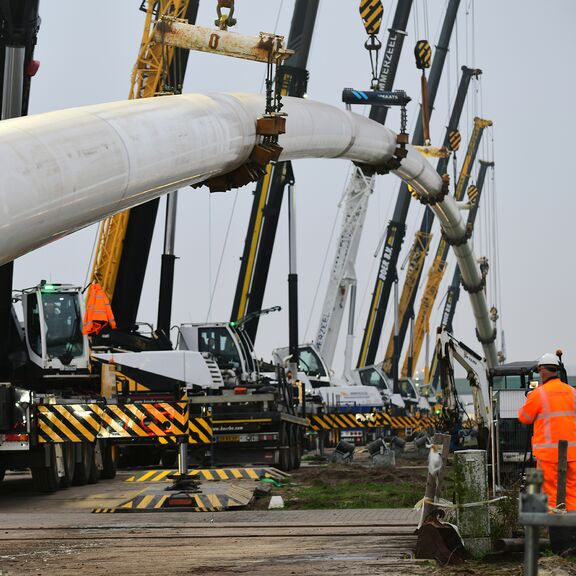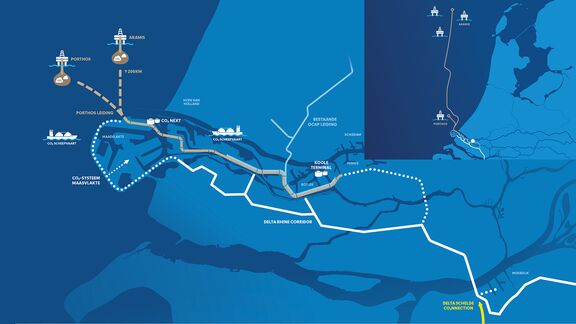
Storage and use of CO2
The Port of Rotterdam Authority is implementing a broad strategy in its transition to a climate-neutral port. The storage, transport and (re)use of CO2 are key elements of this, allowing us to significantly reduce emissions in the short term and lay the foundation for a circular economy based on carbon and hydrogen.

CO2 storage (CCS)
The permanent storage of CO2 is essential to achieving the European climate objectives. To that end, the EU has set a target for storing 50 million tonnes of CO2 annually using Carbon Capture & Storage (CCS) by 2030.
In Rotterdam, this is being promoted through projects such as Porthos and Aramis. This will enable us to store approximately 10 million tonnes of CO2 per year.
The stored CO2 comes from the production of blue hydrogen and emissions from chemical and refining industries that are unavoidable in the coming years, including residual emissions from the production of biofuels.
The CO2 is safely stored in empty gas fields deep below the seabed. This technology is not new and has been used in Norway and other countries for more than 25 years.
On-board Carbon Capture
In addition to capturing CO2 from industry, emissions can also be captured on board ships. This is called On-board Carbon Capture and is an important addition to the use of sustainable fuels to reduce emissions from shipping.
The Rotterdam-based company Value Maritime currently has more than 30 On-board Carbon Capture systems in use on ships. The captured CO2 is supplied to greenhouse horticulture, which uses it to grow its crops, thus reducing the use of natural gas. The CO2 from ships can also be stored.
European infrastructure
For the transport of larger volumes of CO2, the port of Rotterdam will be connected to other clusters by pipeline. For example, Rotterdam will have a new connection to the Ruhr area for the transport of hydrogen and CO2 via the Delta Rhine Corridor. CO2 pipelines between Antwerp, Zeeland and Rotterdam are also being explored, as are possible connections to other European countries where CCS projects are being worked on, too.
In addition to facilitating storage, this infrastructure also forms the basis for Rotterdam to become a CO2 hub in the future, when carbon becomes an important raw material for more circular chemical and fuel industries.
CO2 as a raw material (CCU)
The Port Authority’s ambition is to build a circular ecosystem in Rotterdam over the long term, using CO2 as a raw material.
One example of this is the use of CO2 for the production of synthetic aircraft fuel, plastics and basic chemicals. These are not made from fossil fuels but from hydrogen and biogenic carbon. This is part of our strategy for circular raw materials and fuels.

Photo header: ©PorthosCO2